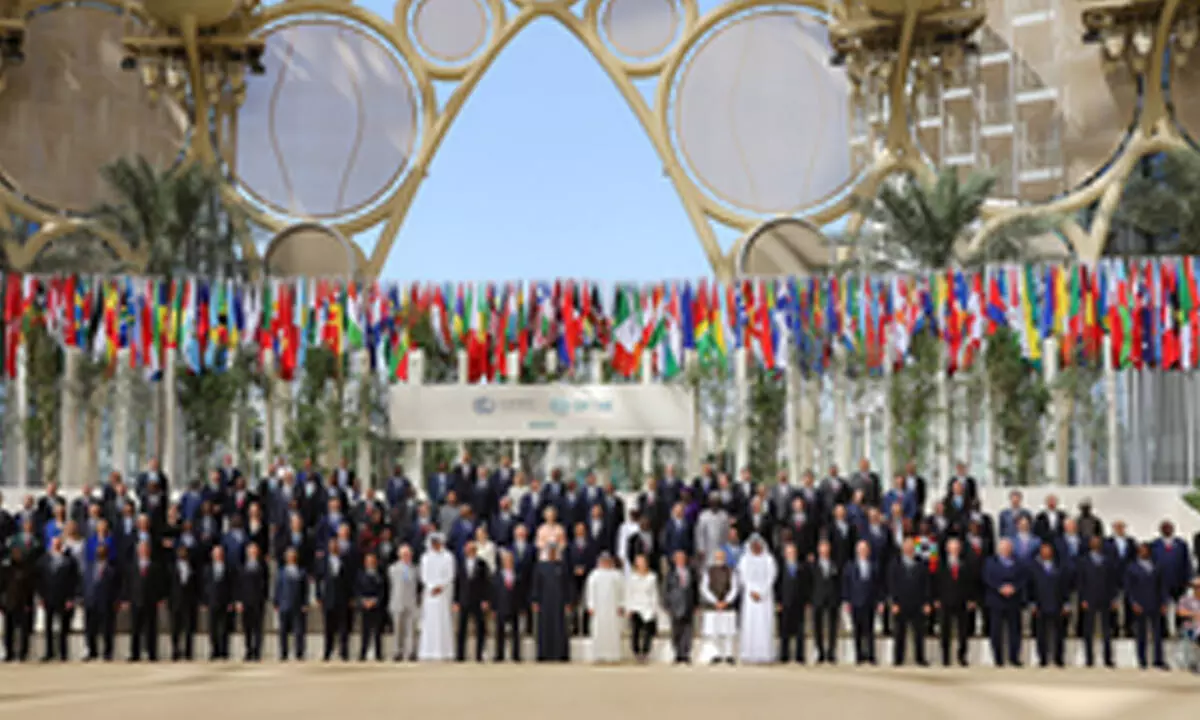India needs $101bn additional financing for net-zero pathway: Report
Share :

Science has made it clear that emissions from coal power -- the dirtiest fossil fuel -- are the single largest contributor to the climate crisis.
New Delhi: Science has made it clear that emissions from coal power -- the dirtiest fossil fuel -- are the single largest contributor to the climate crisis.
The solution for a sustainable future, which means capping global warming at 1.5 degrees Celsius, lies in energy transition -- adapting renewable technologies such as solar and wind, alongside clean hydrogen and sustainable biomass to phase out fossil fuels by 2050.
But to achieve this global goal, India will need additional financing up to $101 billion.
A report titled "Beyond Tripling: India needs $101bn additional financing for the net-zero pathway" finds that India’s 14th National Electricity Plan (NEP14) put the country on track to more than triple its renewable energy capacity by 2030.
But to further scale it up to align with the net-zero scenario proposed by the IEA, India needs an additional financing of $101 billion.
The "Beyond Tripling" report estimates that to achieve targeted solar and wind power generation levels, India would need to develop an additional capacity of 115 GW of solar and 9 GW of wind power by 2030. This will be over and above the targets set out in NEP14.
It will lift India's total renewable capacity to 448 GW of solar and 122GW of wind power by 2030.
The latest analysis from UN Climate Change (UNFCCC), meanwhile, shows global emissions are set to fall by just two per cent below 2019 levels by 2030, if countries continue to follow their current pledges.
At the onset of the two-week-long UN Climate Change Conference (COP28) on November 30, which is expected to see a gathering of over 160 world leaders in Dubai, COP President Sultan Al Jaber, who is the CEO of the state-owned Abu Dhabi National Oil Company, urged the governments to agree on global goals to triple renewables capacity and double the rate of energy efficiency improvements by 2030, alongside the objective of doubling energy efficiency progress.
This call for fast-tracking the just, equitable and orderly energy transition is supported by the International Energy Agency (IEA) and the International Renewable Energy Agency (IRENA).
IEA’s Energy Efficiency 2023 market report, published a day ahead of the COP28 onset, finds that policy momentum for energy efficiency continues to build following the global energy crisis set off by Russia’s invasion of Ukraine.
Investments in efficiency have grown by 45 per cent since 2020, and in the past year, countries representing three-quarters of global energy demand have strengthened energy efficiency policies or introduced new ones.
Key measures are also becoming more widespread. For example, almost all countries now have efficiency standards for air conditioners, and the number of countries with standards for industrial motors has tripled within the past decade.
However, the report found that global improvements in energy intensity -- a primary measure of energy efficiency -- slowed in 2023.
According to the IEA, this was the result of factors such as an economic rebound in energy-intensive sectors such as petrochemicals and aviation in some regions, as well as booming demand for air conditioning during what is on track to be the hottest year on record.
Its analysis has shown that to achieve net zero emissions from the energy sector by 2050, which is essential to limit global warming to the Paris Agreement target of 1.5 degrees, annual improvements in energy efficiency need to double -- rising from a level of two per cent in 2022 to more than four per cent per year on average between now and 2030.
In 2023, global energy intensity improved by 1.3 per cent, well below what is needed to achieve this target.
Countries moving to low-carbon, climate-resilient economies are already seeing environmental, economic and human health benefits.
IRENA’s World Energy Transitions Outlook sees significant economic prosperity with the energy transition that is also expected to create 40 million additional jobs in the energy sector by 2050, with 18 million more jobs globally in renewables alone.
Asia is expected to hold 55 per cent of global renewable jobs by 2050, followed by Europe at 14 per cent and the Americas at 13 per cent. Only nine per cent of the jobs would be in Sub-Saharan Africa.
However, it warned that the energy transition is off-track, demanding urgent and radical action, including a tripling of installed renewable energy capacity by 2030.
According to independent, not-for-profit energy think tank Ember, tripling renewables and doubling efficiency will deliver 85 per cent of the cuts in unabated fossil fuels required by 2030.
The report estimates that to achieve this generation levels from solar and wind, India will need to build an additional capacity of 115 GW of solar and 9 GW of wind by 2030 on top of the solar and wind target set out in its NEP14 plan.
It will take India’s total renewable capacity to 448 GW of solar and 122GW of wind by 2030.
According to the Powering Past Coal Alliance (PPCA), launched at COP23 in 2017 under the leadership of the UK and Canada to advance the transition from coal power, aging, insufficient and disconnected grids are holding back the clean energy transition.
Across the world, 27 national, provincial, state, and city governments joined initially, endorsing the PPCA Declaration, a commitment to accelerate the transition to clean energy.
But the global renewable energy transition to be implemented at the speed, scale, and equitability necessary and it must be accompanied by a comprehensive package that includes the phase-out of fossil fuels and a finance package for the Global South.
May Boeve, 350.org Executive Director, told IANS: “COP28 presents an opportunity for a long overdue course correction: a global renewable energy target, poised for adoption, is a crucial step towards limiting global heating to below 1.5 degrees.
“However, it must come with commitments to finance the just transition in the Global South and a rapid, equitable phase out of fossil fuels. We are at COP28 to ensure climate justice is centered in the negotiations, and working with movement partners on the ground to ensure the voices of those most impacted by the climate crisis take center stage.”
World Resources Institute (WRI) global director of the energy programme, Jennifer Layke, said only two per cent of renewables investment went into Africa in 2021. “If we’re going to avoid fossil fuels, we have to have equitable access to finance.”
At COP28, UN-Energy members are organising over 50 events on wide-ranging aspects of clean cooking, renewable energy trajectories and technologies, finance, energy compacts and the upcoming Global Stocktaking on SDG7.












